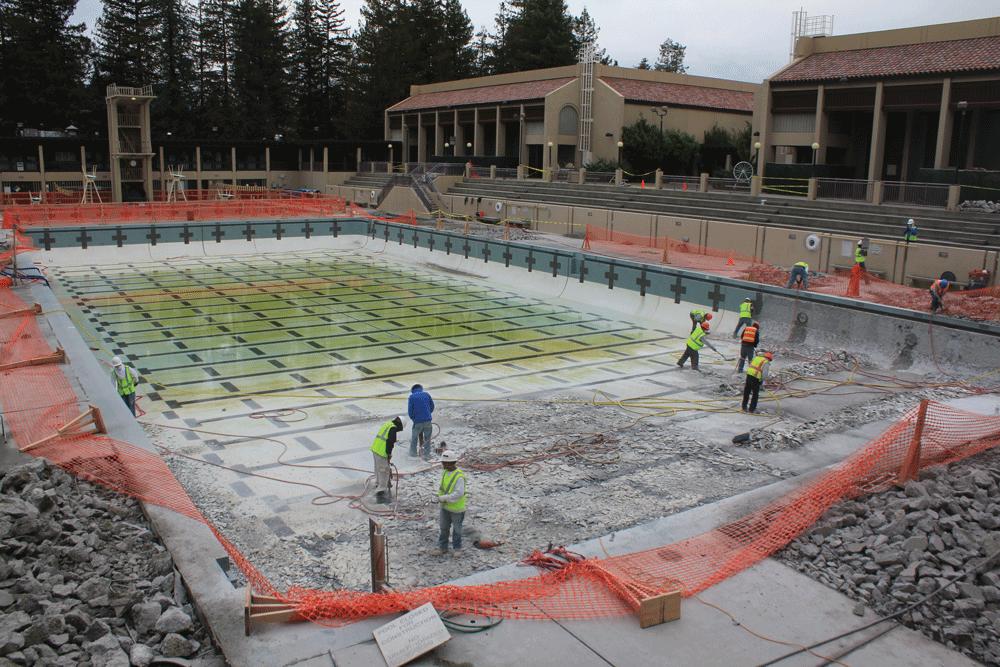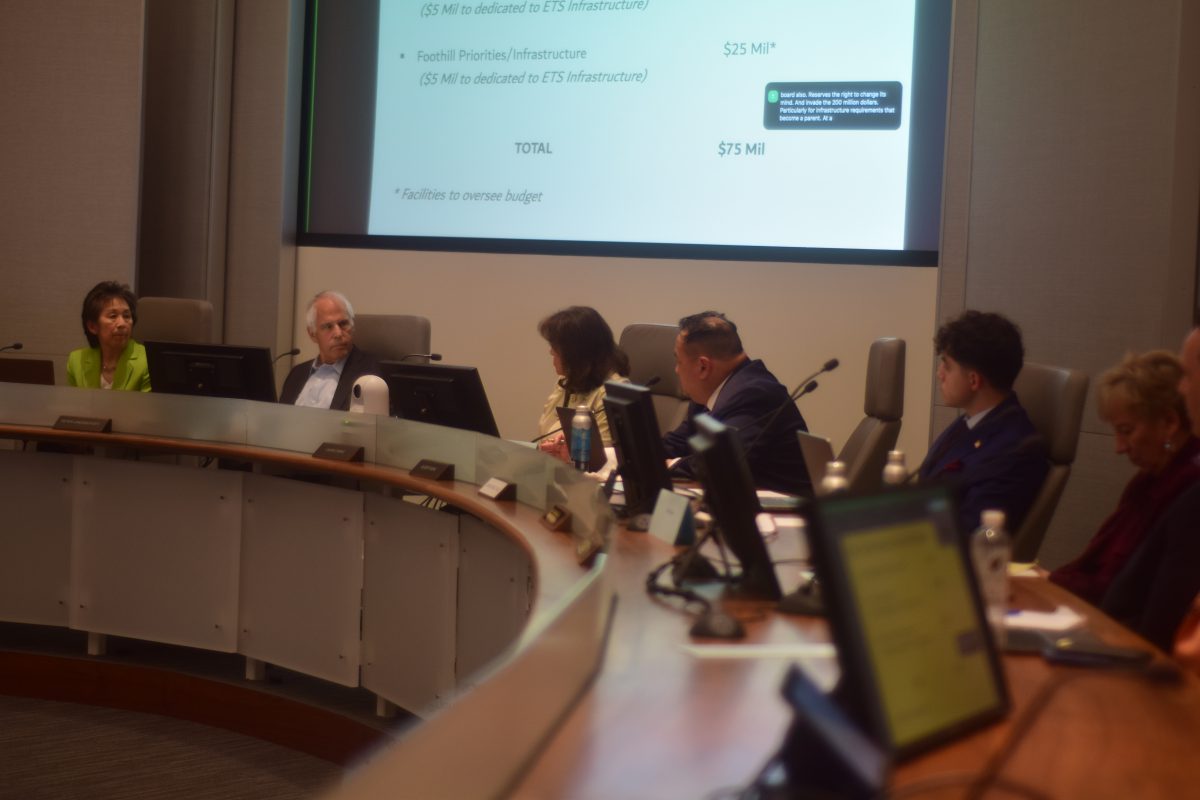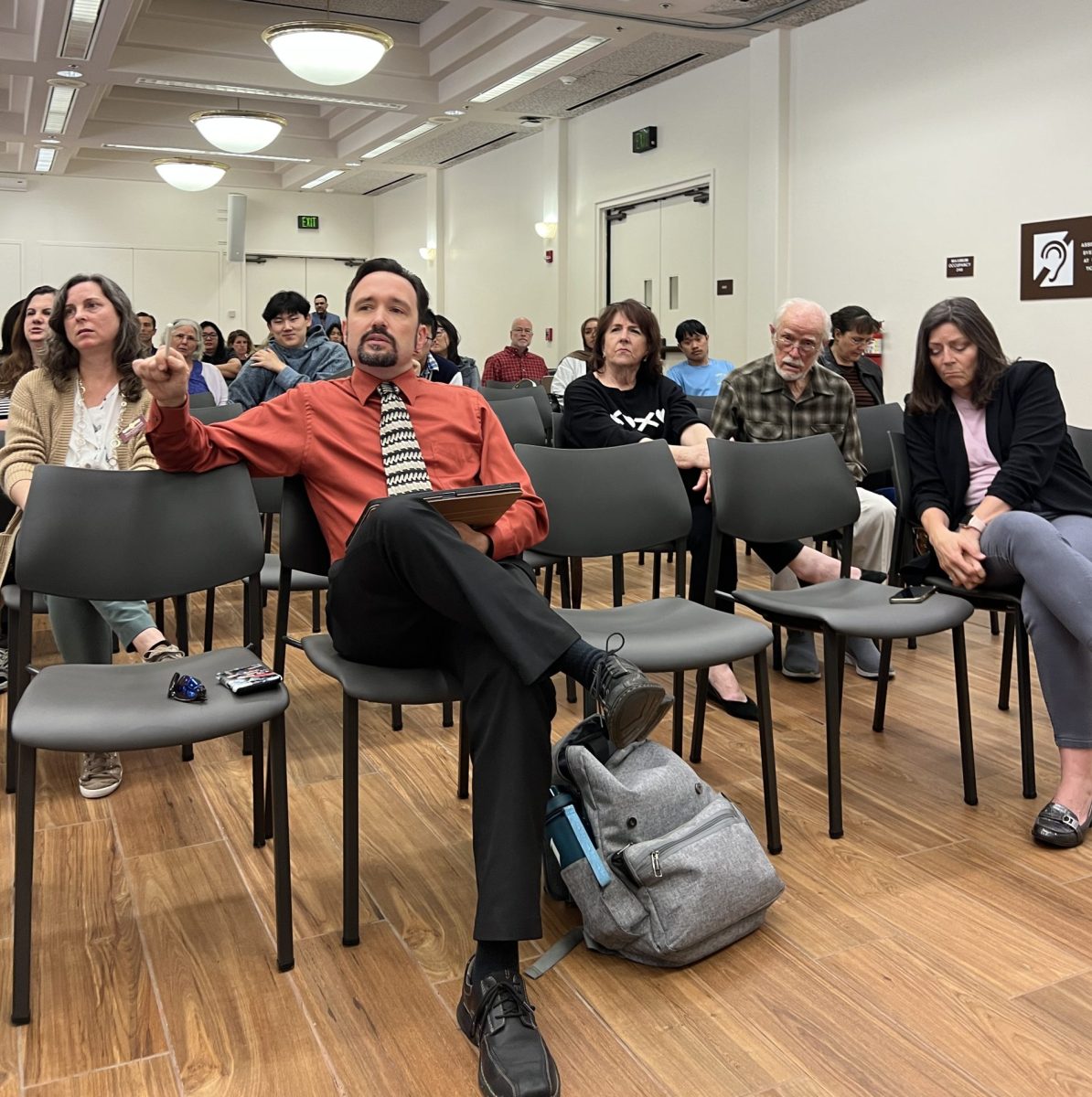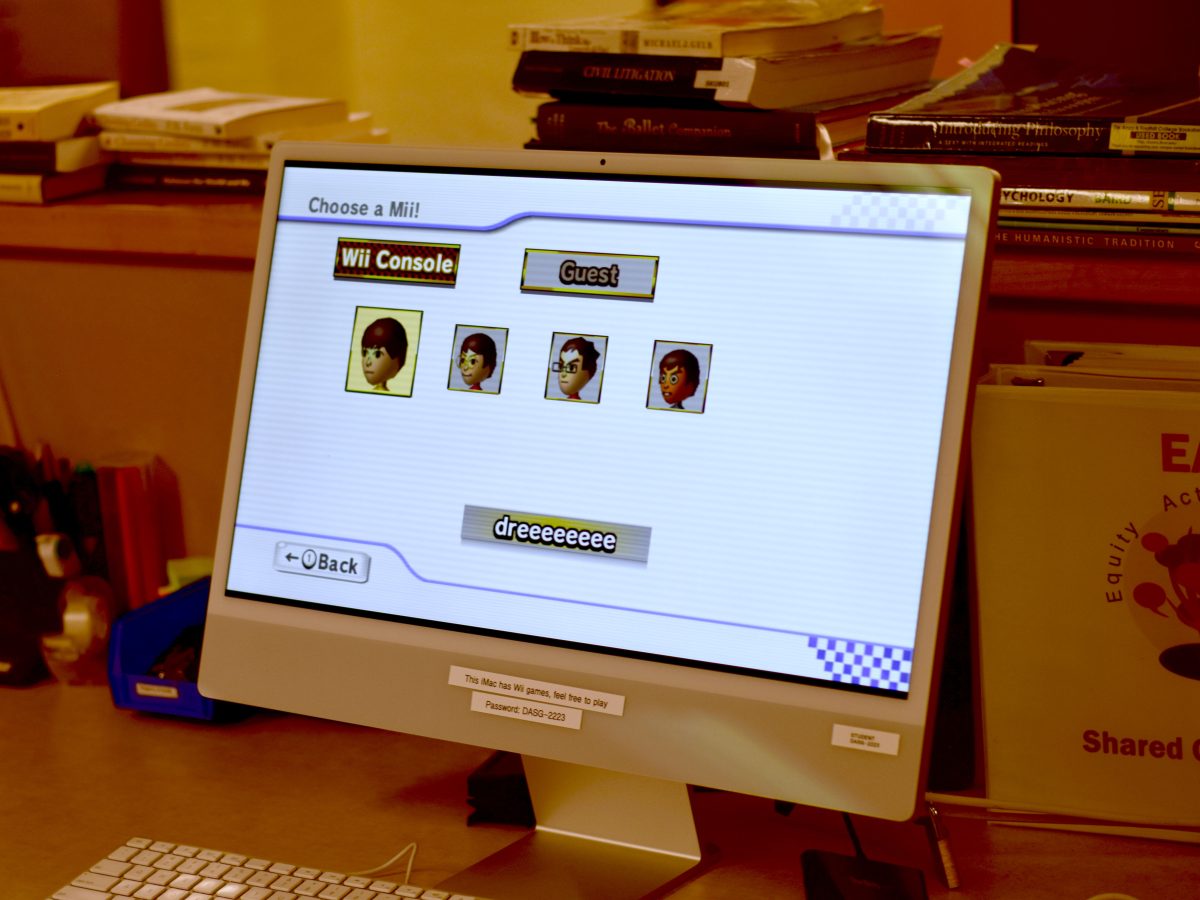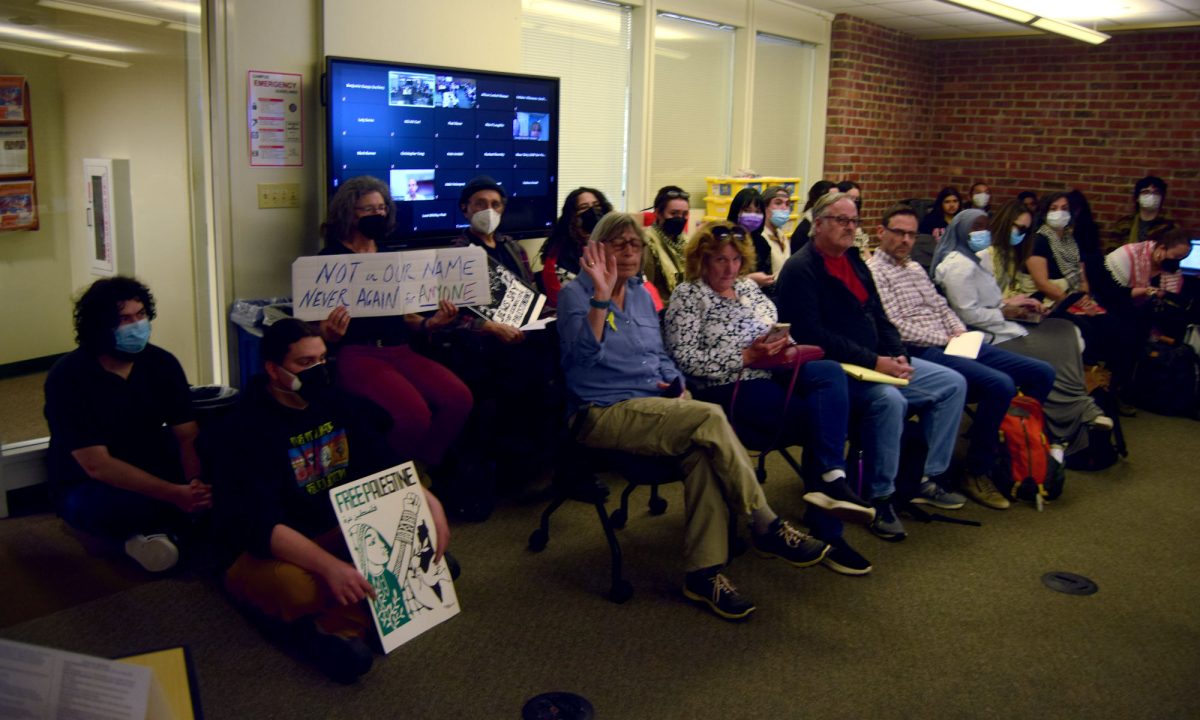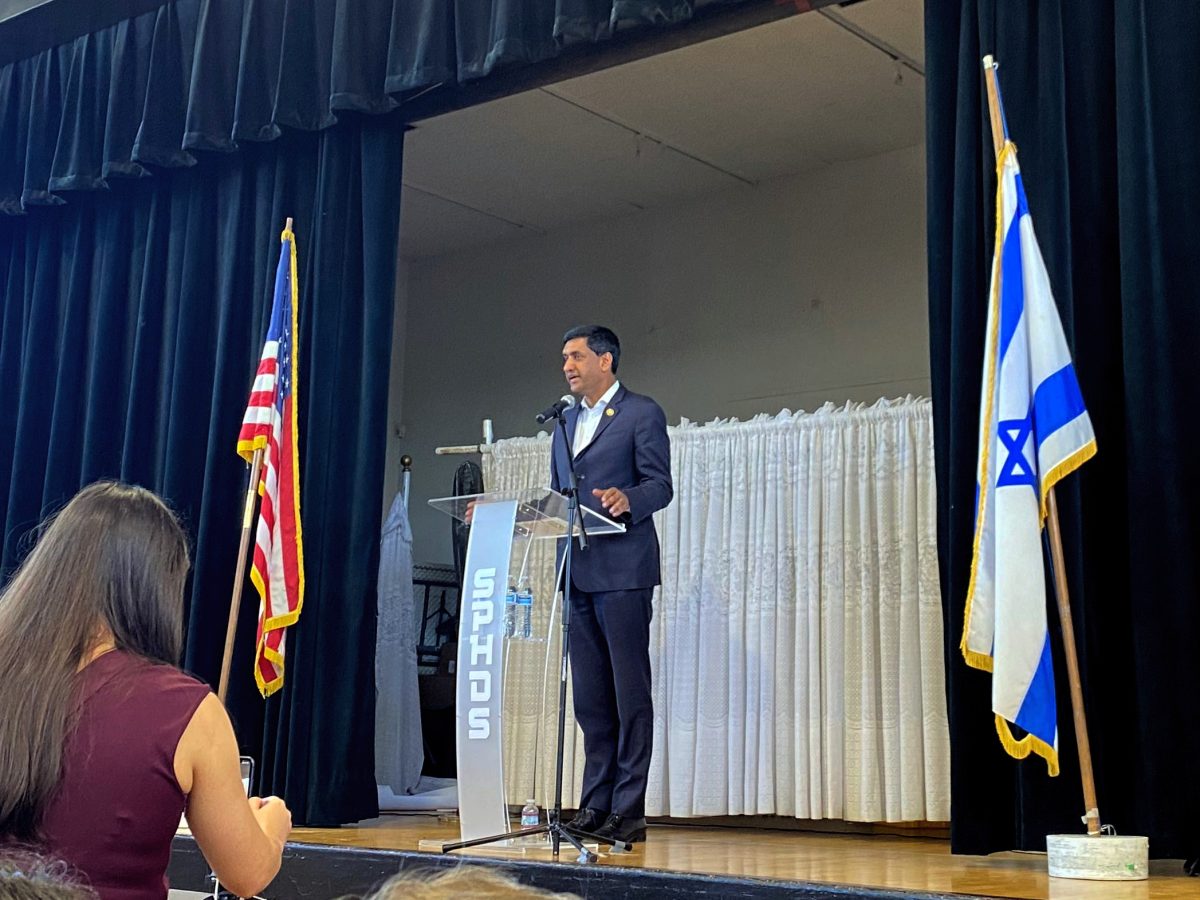The De Anza College swimming pools remain closed as major work is done on both pools and the surrounding concrete deck. Work began in December, and the pools are scheduled to reopen by the start of the spring quarter.
California Commercial Pools Inc. was awarded the construction contract after submitting a base bid of $884,900. The project will use funds from the Measure C bond.
Both the larger racing pool and smaller diving well are being re-plastered and having their tile replaced. Sections of the concrete deck where rebar rusted through or, in a process known as spalling, became exposed will also be replaced. A portion of the deck above the diving well viewing room will also be removed in order to fix leaking.
The last major work on the pool complex was completed nearly nine years ago. Between 2001 and 2003, $1.6 million was spent on pool related projects. That includes $1.2 million spent on work done by Pool Scene Inc. in 2003 which included re-plastering both pools and replacing tiles, pipes and the entire concrete deck.
Director of facilities and operations Frank Nuñez said while most of the current work could be considered normal repairs, issues with the concrete decks could be considered a workmanship issue. Nuñez said he tried to have Pool Scene Inc., who could not be reached for comment, repair some of the damage.
“I made some attempts to have them come out and they’re just unwilling to do it,” Nuñez said, “and the cost to legally pursue that kind of outweighs the cost of the repairs, so that’s kind of how we have to judge it.”
Matt Brinkman, project engineer for Foothill-De Anza program manager Gilbane, said the average life of pool plaster is 10 years, and anticipates it will probably have to be redone in another 10 to 12 years. Brinkman said he could not comment on the work done on the decks but noted that chlorine is corrosive.
Tom Beggs, a physical education instructor, said some users of the pools remember the work in 2003 and expressed concern that work is being done again. Beggs said it was unfortunate the pools have to be closed the whole quarter but that the work was necessary. He pointed to cracks, rust spots and spalling on the deck as well as buckled tile around the diving well in a “non-use area” as indicators of sub-par workmanship.
“All these rust spots … that rebar should never come up. Even though it’s this wet of an environment it shouldn’t come up. It doesn’t come up on concrete driveways and they’re outside all the time, so what happened?” Beggs asked. “What I’d like to ask, are those original contractors going to have to come back and redo some of this stuff?”
Both Nuñez and Beggs noted the pools are heavily used. Classes start from morning to night and also run on weekends and over the summer. Beggs said the heavy use leads De Anza to close the pools for one day in the summer to give the water a “chemical rest.”
Students in adapted physical education classes, which are designed for seniors and those with disabilities, will be particularly affected by the closure.
Beggs, who instructs adapted PE courses, said De Anza has several features that make it particularly suitable for adapted PE users: a relatively flat campus, outdoor pools that allow good ventilation of chlorine and a specially designed chair that carries people between the pool and the concrete deck.
Beggs said swimmers who use wheelchairs will face a challenge to find an alternative.
“Just because you’re disabled doesn’t mean the pool is going to be accommodating for you,” he said.
“They’ll have to go to a pool and figure out when there’s a person that’s willing to lift them and transfer them and get them into the pool.”
One adapted PE user affected is Lane Pendleton, a retired Lockheed worker and Sunnyvale resident. Pendleton began swimming regularly two years ago to ease his hip and knee pain. Pendleton said within months of starting, his pain was gone.
“Now, if I really strain I sometimes feel a little bit of knee pain … if I get too rambunctious mowing the lawn,” Pendleton said, laughing. “But other than that, I just don’t feel hip or knee pain at all anymore, so I’ve decided for the rest of my life that I must exercise in water.”
Pendleton said fellow swimmers had been discussing their plans for winter quarter. He plans on going to Foothill but said it would be less convenient.



